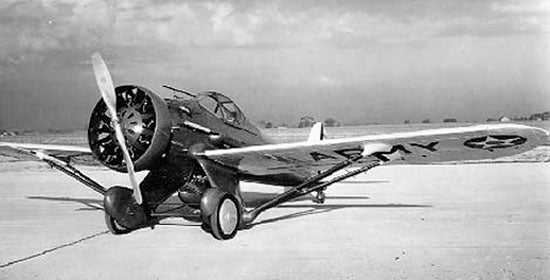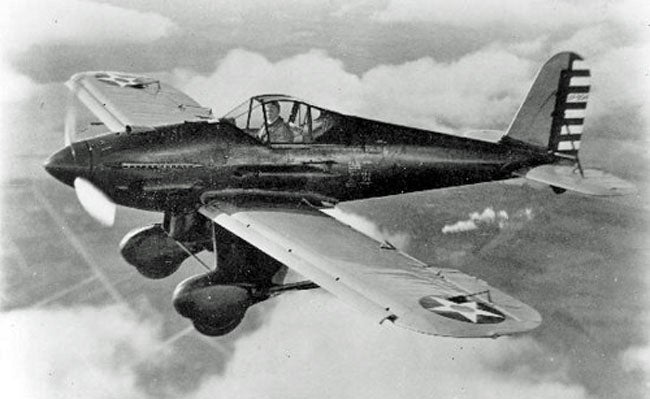 by "ttyymmnn" (ttyymmnn)
by "ttyymmnn" (ttyymmnn)
Published 06/28/2017 at 12:37
 by "ttyymmnn" (ttyymmnn)
by "ttyymmnn" (ttyymmnn)
Published 06/28/2017 at 12:37
Tags: wingspan
; planes you've (probably) never heard of
; Planelopnik
STARS: 10
!!! UNKNOWN CONTENT TYPE !!!
From the
Planes You’ve (Probably) Never Heard Of Department
of
Wingspan
, we bring you the
Curtiss XP-31 Swift
.
!!! UNKNOWN CONTENT TYPE !!!

Aircraft designers will often give a new plane a catchy name in an effort to boost sales or create a certain image, and the names chosen for fighter planes usually impart speed, strength or agility. For their first monoplane fighter, Curtiss chose to name the plane after a bird known for its speed and rapid changes of direction. This probably seemed like a savvy marketing decision at the time, though the Swift ultimately turned out to have neither of these qualities.

The 1930s was a fascinating transitional era in airplane construction, as the airplane evolved from the fabric-covered framework of the biplane to the age of the all-metal monoplane. The US Army Air Corps was looking to adopt a modern fighter, and they accepted proposals from both Boeing and Curtiss in 1932. Boeing offered the XP-936 (which went on to become the P-26 Peashooter ), while Curtiss offered the XP-31. The Swift was the first single-seat fighter in the US inventory to offer an enclosed cockpit, and it was also the last to feature fixed landing gear. In a holdover of the earlier biplane era, braces attached to the landing struts supported the wing, but the wing also had advanced features such as retractable leading edge slots and trailing edge flaps to improve low-speed performance.

The Army took delivery of the Swift prototype on March 1, 1933, and put the new fighter through its paces. Power for the XP-31 was provided by a Wright R-1750 Cyclone radial engine offering 700 horsepower. But the Swift was quite heavy despite its small size, coming in at 3,334 pounds empty, a full 1,200 pounds more than its Boeing competitor. The Cyclone turned out to be woefully underpowered for such a heavy fighter, so Curtiss swapped the radial for a 600 horsepower Curtiss V-1570 Conqueror V-12. While dramatically improving the looks of the Swift, the V-12 did nothing to improve its performance. The Swift’s top speed of 208 mph was still 26 mph slower than the Peashooter, and its service ceiling was also 3,000 feet lower.

In the end, the elegantly-named Swift lost out to the comically-named Peashooter. The Army transferred the sole prototype to the school for training Air Corps aviation mechanics, and the Swift was finally scrapped in 1935.
!!! UNKNOWN CONTENT TYPE !!!
If you enjoy these posts, please join in the conversation and let me know. If you missed an episode, you can find them all at Wingspan . Other aircraft also-rans can be found at Planes You’ve (Probably) Never Heard Of .
!!! UNKNOWN CONTENT TYPE !!!
 "Bman76 (hates WS6 hoods, is on his phone and has 4 burners now)" (bman76-4)
"Bman76 (hates WS6 hoods, is on his phone and has 4 burners now)" (bman76-4)
06/28/2017 at 13:03, STARS: 1
Sure was a pretty plane, in both engine configurations.
 "ttyymmnn" (ttyymmnn)
"ttyymmnn" (ttyymmnn)
06/28/2017 at 16:05, STARS: 0
It certainly was, arguably more attractive than the Peashooter. But the Peashooter had a nasty tendency to flip over on landing, hence the tall headrest. The Peashooter was also the last USAAC fighter to have fixed gear, braced wings and an open cockpit.

 "Bman76 (hates WS6 hoods, is on his phone and has 4 burners now)" (bman76-4)
"Bman76 (hates WS6 hoods, is on his phone and has 4 burners now)" (bman76-4)
06/28/2017 at 16:28, STARS: 1
Definitely, I like the peashooter for its historical importance, but the XP-31 is so much sleeker.